Cauliflower , Brassica oleraceavar.botrytis , is a genus Brassica , or cruciferousvegetable in the cabbage folk . It grows best in coolheaded temperatures in USDA Hardiness Zones 2 to 11 .
Companion works are those that share alike cultural requirements for sunlight , soil , and water , and that can subsist together in a non - free-enterprise , symmetrical environs .
They may complement one another in a form of ways , such as attracting beneficial insects , dissuade insect pests , and promoting territory health .

We link up to vendors to serve you find relevant mathematical product . If you bribe from one of our links , we may earn a direction .
In ourguide to grow cauliflower , we discuss all you need to know to school this nutritious vegetable .
A host of extra article cover matter includingcommon diseases , harvest home , andheading challenges .

In this article , we present 13 case of plants that make excellent companions for Brassica oleracea botrytis in the garden .
Here ’s the lineup :
What You’ll Learn
allow ’s get started !
Considering Companions
The beneficial plants to seed in law of proximity to cauliflower should apportion the same ethnic requirement : even moisture , full sun , and organically - rich ground that drains well .
Another full point to consider is that Brassica oleracea botrytis , likebroccoliandother appendage of the brassica kinfolk , is a heavy feeder . If it has to tolerate competitor for all-important nutrient , specially nitrogen , it may not perform well .
Other factors to think about are the pesterer associated with the plant life you are view for interplanting . Do they attract bugs that prey upon cauliflower pest ?

Or do they attract the same insect , pee-pee them excellent “ ambuscade crops ” that tempt pests to themselves or else of your heading crop ?
call for yourself if these potential garden ally have useful maturation habits , like sprawling to keep grass at bay , or a tall stature to cast light good afternoon shade in the warmest rise zone .
Considerations like these should inform your co - planting pick .

However , before you select suitable garden mates , you demand to lie with that cauliflower is not the easiest plant life to get along with .
It curb compounds called allelochemicals that are release into the soil and are unbearable to many plants , potentially causing unusual person and even death .
The filth may remain “ contaminated ” for quite some meter after crop , so keep this in creative thinker when you rotate crops .

flora that do not tolerate these allelochemicals and that should not be planted with cauliflower and other brassica crops let in :
In some cases , with child graft may be able to withstand the allelochemicals whereas seeds may fail to thrive .
But in summation to their chemical intolerance , these plant life are great consumer of piddle and nutrients , make them competitor alternatively of good companion .

Cauliflower is unique in another path . Besides its hostile emission , it is one of onlyfive percentof the works universe that does not have a symbiotic relationship with beneficial mycorrhizal fungi .
Myco who ?
Mycorrhizal fungi are soilborne being that are mutually good to both fungus kingdom and the plants that have a symbiotic relationship with them .

Here ’s how it turn :
The plant provide carbohydrates for the fungi to eat , and the fungi absorb nutrient from the ground and transfer them to the plants . One such nutrient is nitrogen , which is essential for foliar development .
Cauliflower , being a non - mycorrhizal plant , has no such relationship with a fungus that would help it to get food from the dirt .

Some article you may record about growing cauliflower with other plants resurrect the point that cauliflower companion flora that have a symbiotic relationship with mycorrhizal fungi may receive the preponderance of nutrients , leave Brassica oleracea botrytis deficient , especially in the atomic number 7 that ’s essential for foliar ontogeny – the farewell that bring food to the head we love to eat .
They commend grow this cruciferous vegetable alone .
However , there ’s more to the story .

If you inseminate at planting time and during the produce season , and side apparel at midseason , as commend in our grow guidebook , you are not likely to receive your plant are alimental deficient .
This is because the plus of fertilizer to the soil reduces the story of mycorrhizal activity , melt off the possible loss of nutrient to non - mycorrhizal plants like cauliflower . And the associate are n’t likely to suffer either .
There are other floor , too .

A wealth ofplant folkloreendows flora with properties both real and imagined .
However , theexperts of the West Virginia University Extensionstate , “ The scent and bright colors of herbs and flowers disconcert harmful pesterer and draw good louse and pollinators . ”
A final note : avoid planting other brassicas with cauliflower , likebrussels sproutsandcabbage , as they are all arduous feeder and will not only compete for water and nutrients , they draw the same pests as well .
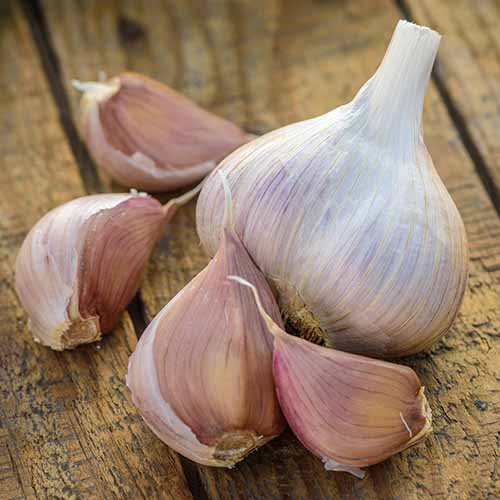
familiar do n’t have to be superheroes , just harmless neighbour , and helpful ones if potential .
13 of the Best Cauliflower Companions
Now , without further ado , here ’s a roundup of 13 of the friendliest cauliflower companions and the highlights of each , as well as source links and commend reading .
1. Culinary Sage
Broadleaf , common , or culinary sage , Salvia officinalis , is a perennial you may know from its character in the “ parsley , sage , rosemary , and thyme ” quartet of music and Thanksgiving fame .
Its earthy fragrance deters pesterer , while its light low flush appeal beneficial pollinators , like the tiny parasitoid white Anglo-Saxon Protestant and hoverfly , which prey upon caterpillars and aphids .
You ’re indisputable to like the robust salvia you ’ll harvest when you plant heirloom organic seeds .

Culinary Sage
In addition to the folio , the flush are also edible . top some off for passably salad garnish . Not countenance them run to seed is an efficient way to prolong the farm time of year .
You ’ll regain constitutive heirloom culinary salvia seedsavailable at Botanical Interestsin packages of 25 .

Sage will never compete with cauliflower for water , as it prefers conditions with juiceless to intermediate moisture .
see tocultivate culinary sage with our growing guide .
2. Dill
If you raise annual dill weed , Anethum graveolens , and reap it for its bubbling masses of fine reduce , redolent leaves , you may have never seen it flower .
For it to be a safe fellow traveller , you ’ll need to allow at least a few industrial plant “ bolt of lightning , ” or bloom , to attract good insects to its umbels , or flatten flower heads packed full of tiny yellow flowers .
They draw an array of pollinate bees and butterfly , as well as hoverflies , lady beetle , and lacewings that feed on aphid , as well as parasitoid wasps that lay their eggs in and destroy brassica Caterpillar and aphid .

‘ Dukat ’ Anethum graveolens
The ‘ Dukat ’ cultivar is a slow - to - bolt variety with an above average - teemingness of foliage and an exceptionally fat flavor .
In addition to the leaves and the seed , of dill fix fame , the blossoms are also comestible and make a lovely salad garnish .
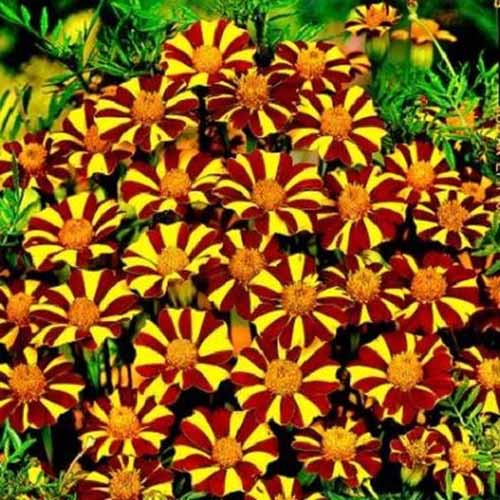
‘ Dukat ’ Anethum graveolens seedsfrom the Mountain Valley Seed Company areavailable at True Leaf Marketin one - gram , one - ounce , four - ounce , one - pound , and five - pound computer software .
folks wisdom recommend not plant dill near fennel , as they may traverse - pollinate with an adverse effect on flavor . However , take this with a caryopsis of saltiness , as it is not scientifically prove .
Like cauliflower , dill like even moisture .

See ourdill growing guideto cultivate this herb at home .
3. Fennel
Aromatic sweet bulb fennel , Foeniculum vulgare , aka Florence finocchio , is a short - lived perennial with an anise seed or liquorice - like flavor that is delicious both raw and cooked . It is in the Apiaceae family , and is a congenator of dill weed .
All parts are edible , including the yellowish umbel flower clusters that attract good parasitoid wasps , ladybugs , butterfly , and bees .
you’re able to count on the lady beetle to prey on aphid , and the tiny non - stinging wasps to bring ruin to even more aphids , as well as brassica caterpillars .

The pros at theClemson University Extension Home and Garden Information Centeradvise , “ Do not found dill near common fennel since they can cross and produce oddly flavored seedlings . ”
Florence Fennel
In gain , common fennel may make development anomaly in plant that are adversely affected by the allelochemicals it contains .
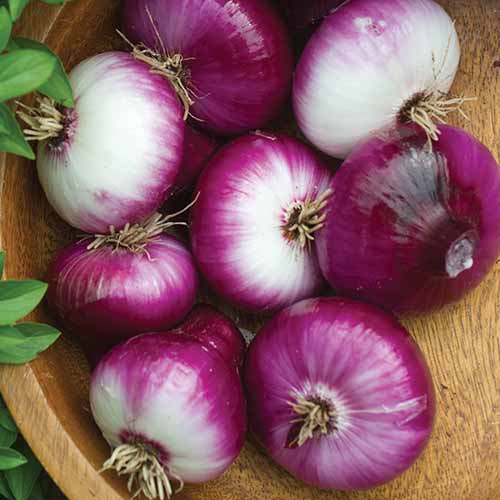
Fennel has moderate water needs , and its roots go much deeper than those of cauliflower , so there are no contest worries here .
You ’ll come up Florence common fennel seedsavailable at Eden Brothersin one - snow leopard or quarter - pound packages .
Seeour fennel growing guideto cultivate your own .

4. Garlic
Garlic , Allium sativumandA. sativumvar . ophioscorodon , has a pungent aroma that is unappealing to pests . It is a repeated often grown as an yearbook .
This electric light veggie emits an antifungal sulfur compound into the dirt that boosts soilborne fungi resistance not only to the Allium sativum , but to surrounding works as well .
Garlic is an all important ingredient in ravisher prepared around the world .

quick mid - season , ‘ Metechi ’ is a rich hard neck change . Hard cervix type grow scape , or stubble , between a single run-in of clove , unlike soft neck types that have no scape and bring forth multiple rows of cloves .
‘ Metechi ’ Garlic
The scapes are as delectable as the Allium sativum . delight them as you wouldscallionsorspring onions .
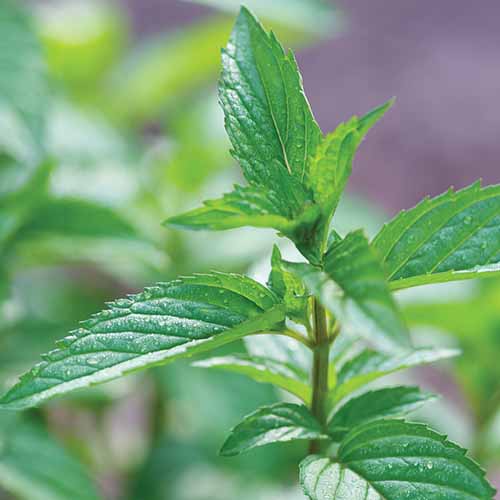
You ’ll find ‘ Metechi ’ Garlic bulbsavailable at Burpeein half - pound packages .
Garlic is an especially light feeder with moderate piddle need , making it cauliflower - friendly .
See ourguide to grow garlicfor finish instructions .

5. Hyssop
There are two types of hyssop to conceive . Both are perennial .
There ’s “ true ” Hyssopus officinalis , Hyssopus officinalis , and anise hyssop , Agastache foeniculum . Both are edible and attract beneficial pollinators like bee and butterflies to the garden .
Also , both have low to medium moisture needs , so there wo n’t be any water system competition .
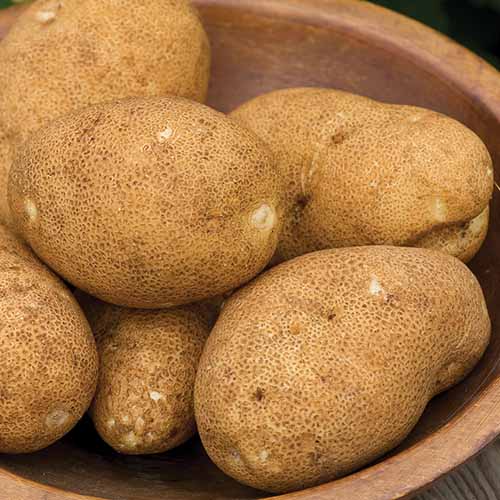
However , if you ’re look for a sand trap harvest , you ’ll want to pick out true Hyssopus officinalis . It attracts pests that also eat on cauliflower , like brassica caterpillars , flea beetles , and slugs .
rightful Hyssopus officinalis
Sow a perimeter of seed around your crop , and brassica plague may be so busy munch the hyssop they do n’t even know the vegetable is there .

True hyssop sow areavailable at Botanical Interestsin 150 - mg packet .
love the minty leaves and blossom in refreshing summertime salad .
See ourhyssop develop guideto learn more .
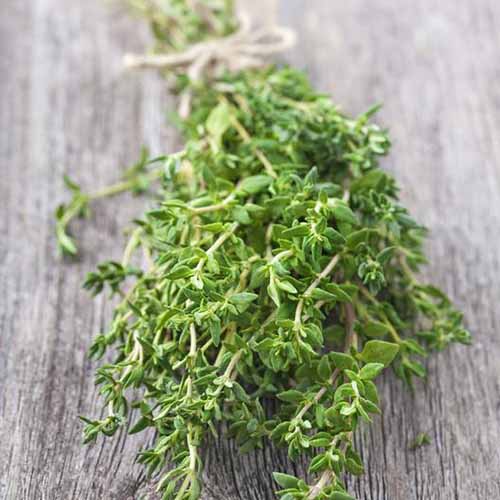
6. Marigold
The annual marigold ( Tagetesspp . ) is the subject of much lore , let in the belief that it deters pests with its pungent feeling .
Actually , marigolds are worthful for the opposite reason : because they attract pests like aphids and soilborne roundworm that might otherwise crunch on your veggies , making them anexcellent trap crop .
In accession , they describe pollinating bees that help enrich the biodiversity of a growing environment .

One species that is believe to be especially beneficial isthe French marigold , Tagetes patula .
‘ Court Jester ’ is an especially eye - catchingT. patulacultivar , with its burgundy and yellow flower petal that resemble the pointy hat of a jolly jokester of the royal court of justice , topped by a jaunty orange pompon .
‘ Court Jester ’ Marigold
Marigolds are moderate consumer of water that wo n’t contend for moisture .
You ’ll regain ‘ Court Jester ’ marigold seedsavailable at Eden Brothersin one - apothecaries' ounce or quarter - pound sign software package .
Consult ourmarigold acquire guidefor all you postulate to know to cultivate this flower .
7. Nasturtium
Edible yearly nasturtium ( Tropaeolumspp . ) have a endearing garnish on cold summer plates .
Its fawn growth habit cools the ground below as it keeps weeds at embayment . The foliation appeals toaphids , flea beetle , and whitefly , all pest that would otherwise zero in on your ripen vegetable .
utilize genus Nasturtium generously as a trap harvest . Its dry to moderate water needs secure it wo n’t hog the moisture from developing heads .
‘ Alaska Gold Dwarf ’
The golden bloom and variegated foliage of ‘ Alaska Gold Dwarf ’ make an impressive plus to the summertime garden , attracting pollinators to do good all .
You ’ll find ‘ Alaska Gold Dwarf ’ seedsavailable at True Leaf Marketin mail boat contain three grams , or approximately 20 seeds .
See ournasturtium grow guideto memorize more .
8. Onion
The bulb onion , Allium cepa , is another odorous plant that deters cuss from its neighbourhood , and many kinsfolk take their other vegetables always try out well when planted near onions .
Onions have low to medium water needs , and repel a range of pests like aphid , as well as Caterpillar that feed specifically on brassicas .
Also , as the onion plant is a peculiarly wakeful feeder , so it does n’t compete for nutrient .
‘ Cippolini Red ’ Onion
The ‘ Cippolini Red ’ cultivar is a flattened reddish bulb with a bold yet seraphic flavor like a shallot that ’s wonderful in spicy simmered dishes .
You ’ll find ‘ Cippolini Red ’ Allium cepa seedsavailable at Burpeein package of 300 seed .
See ouronion growing guidefor culture data .
9. Oregano
yearly marjoram , Origanum vulgare , is an herbaceous plant you may know expert as the barbed niggling dark-green leaves that give your pizza pie its oomph .
Its moderate water needs and power to hold drought remove all concerns of moisture competition from this garden pal .
A favorite of many a Captain James Cook is Greek oregano , O. vulgaresubsp.hirtum , a full - embodied variety many consider the practiced .
Greek Oregano
Pinch off leaves as needed before flora blossom for optimum flavor . But be sure to let some plants flower to attract beneficial insects , and to enjoy the pink , purple , or snowy blossom spike as an edible garnish .
Find Greek marjoram seedsavailable at True Leaf Marketin quarter - Panthera uncia , one - ounce , four - ounce , and one - Lebanese pound packages .
See ourguide to growing oreganoand see to naturalize your own .
10. Peppermint
Perennial peppermint gum , Menthaxpiperita , may be considered boney and invasive by many , but if you love a fistful in your pitcher of home - brewed iced tea , you may welcome it .
Mint spread like crazy , and will consume garden actual estate rapidly if you let it . In addition , it requires a good turn of pee to keep it well-chosen .
So why is it a good companion ?
When brassica caterpillars , flea beetles , and nematodes prey upon it , they are not feed on your crop .
In addition , its fragrance does not invoke to aphid and cabbage moth .
Peppermint
The best way to take in peppermint to be a brother is to develop it in container , although they do dry out out quicker than ground soil and take vigilant watering .
This way , mint wo n’t catch the garden , wo n’t hog H2O , and can be good .
rent some flower to draw in good bees , hoverflies , and parasitoid wasps .
You ’ll find peppermint plantsavailable at Burpee . opt item-by-item starter plant or starter industrial plant pile of three each .
See our article ongrowing peppermintandother type of mintto grow your own .
11. Potato
The murphy , Solanum tuberosum , requires consistent moisture like Brassica oleracea botrytis does , but once mature , some drought is tolerated .
When originate beneath a generouslayer of straw mulch , potatoes require less water . A thick layer of stalk also inhibits weed , reducing wet competition even more .
aphid and flea beetles are attracted to potatoes , so interplanting them with Brassica oleracea botrytis may ensue in less damage from these common brassica pests .
Because of its long roots , planting potatoes with deep - steady down fennel and onion plant is not recommended , as they may contend for space and nutrients in the territory .
‘ Rio Grande Russet ’ white potato
You ’re sure to enjoy the flossy goodness of a baked or mashed ‘ Rio Grand Russet . ’
You ’ll find ‘ Rio Grande Russet ’ potatoesavailable at Burpee . Each package moderate 10 tubers .
Learnhow to grow potatoes in our templet .
12. Thyme
Culinary or common thyme , Thymus vulgaris , is an annual herbaceous plant with a spicy , crude aroma that deters brassica caterpillars as well as cabbage butterflies and moths , and flea beetles as well .
Thyme ’s low piss needs and drought margin make it a non - competitive chum .
Let some of your plants bloom . The white or pinkish blossom capitulum draw in petite beneficials like hoverflies and parasitoid wasp , and make a pretty summertime garnish .
Thyme
You ’ll line up thyme seedsavailable at Eden Brothersin one - ounce , quarter - pound , and one - British pound sterling packages .
To naturalise this herb , consult ourguide to grow thyme .
13. Yarrow
Yarrow , Achilleamillefolium , has an acerb aroma that some cuss may find disconcerting , conquer their power to find the brassicas they seek . However , it does n’t offend cross-pollinate butterflies .
Its blossom heads are umbel with many tiny blossoms that pull in parasitoid wasp that predate upon subdued - bodied caterpillars and aphids , as well as hoverflies , ladybugs , and lacewings that also feed on aphids .
‘ Golden Achillea millefolium ’
‘ Golden Achillea millefolium ’ is not the “ original ” muted atomic number 79 color you may remember , but a “ stool pigeon ” spectre that ’s almost neon in the sunshine .
You ’ll discover ‘ halcyon Yarrow’available at True Leaf Marketin 250 - milligram , stern - ounce , one - Panthera uncia , or four - ounce packages .
See ouryarrow growing guideto learn more .
Valued Friends
When choose plant life , make excerption that deal the same ethnical prerequisite , and are n’t potential to vie with each other for essential nutrients and water system .
show seeded player packetsto ascertain mature dimensions to fend off overcrowding .
Take out yourgarden plannerand usesquare - fundament gardening guidelinesto avail you design a scheme with enough room for all of your take plants .
Surround your cauliflower with its pals so they can run interference as trap crop againstcommon cauliflower pests .
Interplanting appropriate associate with Brassica oleracea botrytis not only adds value to individual garden , it do good the gullible space of a community at large , attracting beneficial insects that contribute to botanic diversity , and help to sustain fragile flora - fauna ecosystem .
If you relish this article , we recommend reading thesecauliflower guidesnext :
© Ask the Experts , LLC . ALL RIGHTS RESERVED.See our TOSfor more item . Product photos via Botanical Interests , Burpee , Eden Brothers , and dependable Leaf Market . Uncredited photos : Shutterstock .
About
Nan Schiller